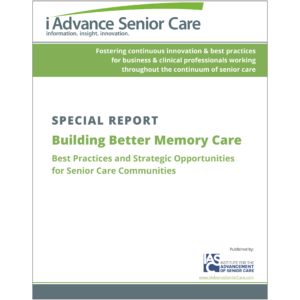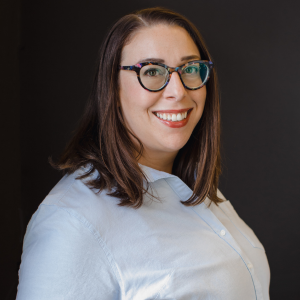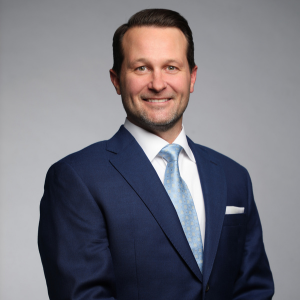The wellness premium
“You saved my life,” a Redstone Highlands’ staff member once exclaimed to John Dickson, president and CEO of this faith-based, not-for-profit CCRC organization headquartered in the Pittsburgh (PA) area, with more than 400 employees in three facilities. Today, this employee has experienced significant weight loss, walks more, breathes easier, and maintains her health through regular wellness physicals and testing. Dickson and Jim Hodge, vice president of Human Resources, often hear thanks and testimonials like this. Health awareness and positive action have become a part of the organizational culture at Redstone Presybterian SeniorCare.
A FINANCIAL WAKE-UP CALL
In 2002, rising healthcare costs precipitated a 44% increase in premiums (effective January 1, 2003) by Highmark Blue Cross Blue Shield, the organization’s health insurance provider. The increase forced Redstone’s hand to look for ways to manage this cost. “Merely passing the increase onto employees or slicing and dicing benefit coverage wasn’t a road we wanted to go down. We wanted to fix the problem for the long-term benfit of our employees,” says Dickson, “so we met with Highmark to discuss our options.”
Hodge continues on this collaboration. “In the meetings, we discovered that our new employees used their coverage liberally. In essence, some employees joined the organization just for the excellent coverage we provide,” he states. He adds that once the individual’s medical procedure or need was fulfilled, he or she quit. “Candidates were literally ‘shopping’ us for our coverage,” says Hodge. Today, two Highmark plans are available to employees. “New employees are enrolled in a plan with higher deductibles and copays to prevent the benefit ‘job shopping’ that Jim referred to,” says Dickson.
After much discussion and planning, Redstone Presbyterian SeniorCare, with assistance from Highmark, decided that a wellness initiative would promote health, increase productivity and attendance, and help reduce the overuse or indiscriminate use of medical coverage, thereby reducing insurance claims.
PROGRAM ROOTS
In the beginning, five employees served on a newly created Wellness Team, with four wellness programs offered annually. Over time, the Wellness Team became the Wellness Committee and actively managed a broadening scope of wellness activities. “First and foremost,” says Dickson, “we strive to achieve wellness through education.” By learning about what’s available, employees become knowledgeable consumers and can make solid, efficient choices.
Although participation is not mandatory, all employees must have an annual physical, which is in line with Redstone’s goal of instilling its employees with personal responsibility and accountability. Hodge explains, “If someone uncovers a health concern, he or she now has the opportunity and means to address it.” For example, if someone is diagnosed with diabetes mellitus, there is a Diabetes Awareness class. “Control and awareness of a condition or potential health issue can benefit the staff member in a variety of ways,” says Hodge. That person with diabetes, through education, can also help control his or her blood pressure and weight through awareness and using the tools provided.
Knowing his or her health status, the individual can determine which of the wellness activities would be most beneficial. A person with a heart problem can learn to de-stress, cook (and eat) healthy, and get involved in heart-friendly exercise programs.
FROM AEROBICS TO ZUMBA
Over the past eight years, the committee has initiated programs targeted at wellness education, heart health, fitness and exercise, healthy eating, weight loss, and more. Held on and off the Redstone Highlands campuses, the variety of targeted health issues lets employees customize their fitness plans to meet individual needs.
2011 FOCUS: TAKING ACTION AGAINST SMOKING
Tobacco use is universally recognized as one of the most obvious bad habits and detrimental health risks. Yet, lighting up still considered a legal activity and a personal choice. “Encouraged by the success of the other wellness initiatives, it was decided that tobacco usage is the focus for 2011,” says Hodge.
The idea behind this focus is a tobacco surcharge program. Redstone Highlands’ 400+ employees and their covered adult dependents get tested for tobacco use. “If they do use tobacco products, they pay a surcharge on their premium,” says Dickson. “They paid 10% in January and another 10% surcharge is levied in July. The money goes into a special account,” he explains. If they quit smoking, half of the surcharge is returned to them after one year, when they are retested. “As the program continues, and they remain smoke free, that 20% surcharge is reduced to two 5% payments. If successful at the two-year testing, the 20% surcharge is removed from their insurance contribution and the surcharge money is completely refunded,” says Hodge. He stresses that the participation of the employee and any covered dependents is not mandatory. Dickson reaffirms that he wants smokers to weigh their options and accept personal responsibility for their actions.
Support and encouragement is offered to those who recognize and understand the health and financial benefits of quitting. Highmark and Penn State University have partnered with Redstone Presbyterian SeniorCare to provide funding for cessation program and wellness coaches.
During the course of the year, employees will be provided with several opportunities to participate in the tobacco cessation program. Redstone plans to make their wellness education focus on tobacco cessation beginning with the second calendar quarter of 2011, so this will hopefully encourage tobacco users to consider the program.
Employees, spouses, and adult dependents are not required to inform Redstone if he or she intends to discontinue the use of tobacco. The only required notification is the request to be tested as soon as the participant is tobacco free so some financial relief on premiums begins. Success can begin to be measured at any time during the year depending on requests for nicotine screening.
Although the program is in its beginning stages, a handful of the employees that currently have a tobacco incentive payment have already requested the nicotine testing. However, 24 of of the tobacco-using employees elected to move to the higher deductible coverage to eliminate the increased payroll deduction for using tobacco. The first retesting will begin to show how well employees and their dependents are succeeding in ending their use of tobacco for good.
SUMMARY
Redstone Presbyterian SeniorCare has seen great success and takes great pride in its employees’ commitment to personal wellness. Insurance premiums have stabilized. “We continue to promote and offer a variety of programs to keep our employees active and energetic because that is how they can best serve themselves, their families, and our residents,” says Dickson. Indeed, what began as an organization incentive has been embraced, refined, and redesigned by Redstone Highlands’ employees and families who are dedicated to health awareness. LTL
For more information, e-mail Jim Hodge at jhodge@redstonehighlands.org or visit www.redstonehighlands.org.
Long-Term Living 2011 April;60(4):42-43

Sandra Hoban was on I Advance Senior Care / Long-Term Living’s editorial staff for 17 years. She is one of the country’s longest-serving senior care journalists. Before joining Long-Term Living, she was a member of the promotions department at Advanstar Communications. In addition to her editorial experience, Sandi has served past roles in print and broadcast advertising as a traffic and talent coordinator.
Related Articles
Topics: Articles , Facility management , Operations , Staffing











